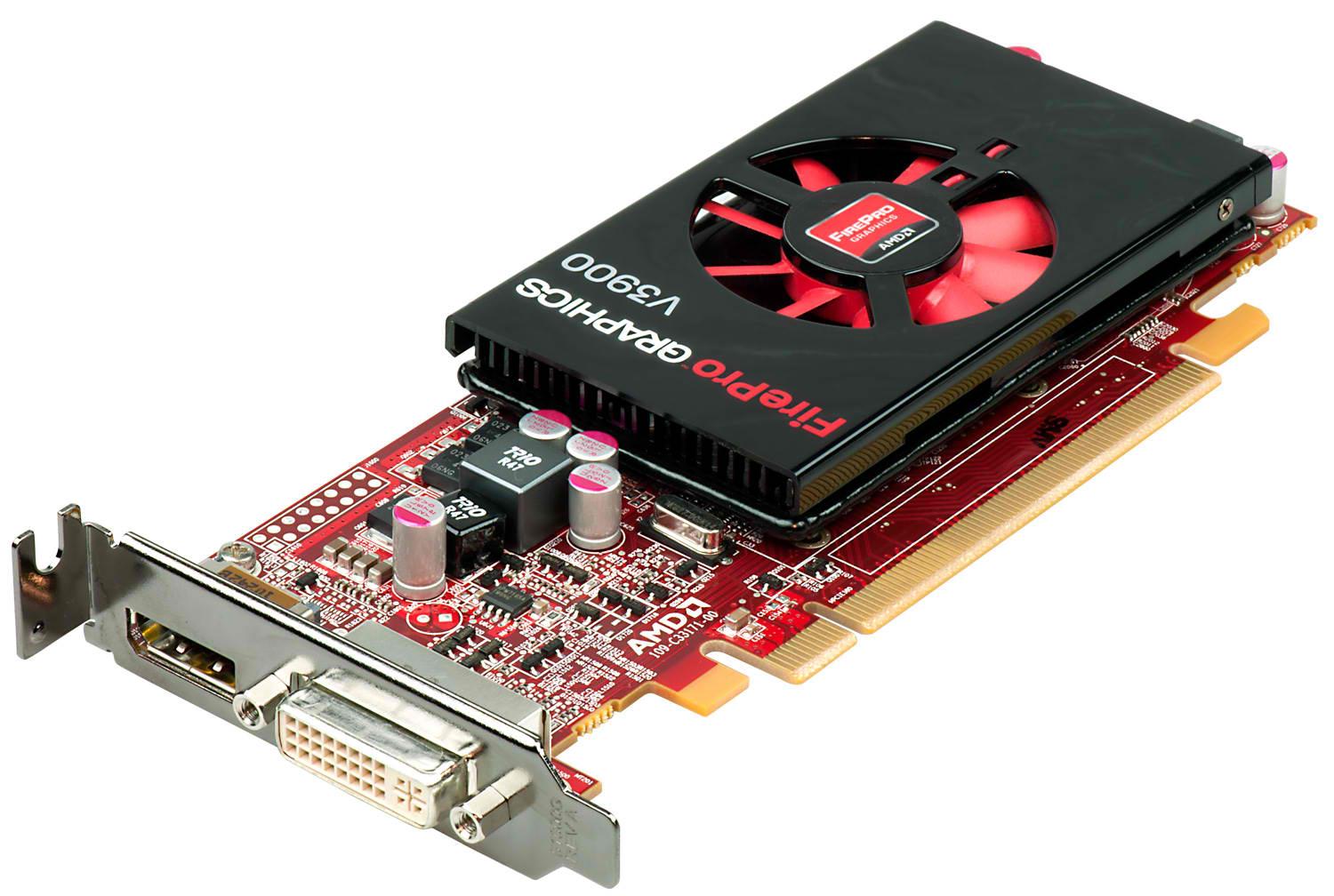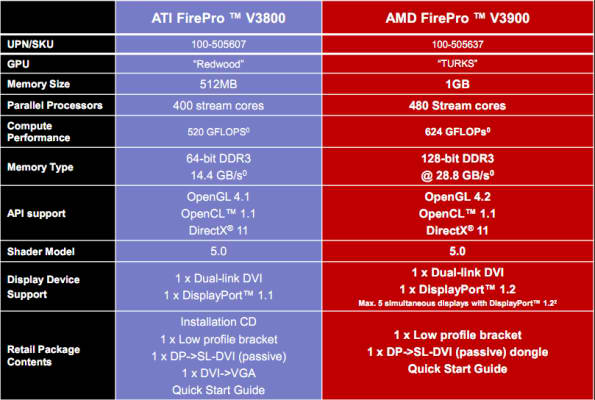AMD Launches FirePro V3900 Professional GPU
AMD has announced the launch of its new FirePro V3900 professional graphics card.
AMD has released its new entry-level V3900 professional graphics card, which replaces the V3800. The V3900 is priced at $119, which puts it directly up against the Nvidia's Quadro 400. It sits roughly $50 less than the Nvidia's Quadro 600 and $20 more than the V3800.
From the specifications, V3900 looks to be a nice update to the V3800 and is basically the business version of the Radeon HD 6570 DDR3. The V3900 has double the memory at 1GB and is based on the "Turks" GPU. The card's 128-bit DDR3 memory gives it 28.8GB/s of memory bandwidth compared to the V3800, which had a 64-bit interface providing half the bandwidth at 14.4GB/s. It supports the latest versions of OpenGL and OpenCL (4.2 and 1.1, respectively). Based on various test conducted by AMD, the card shows performance increases over both the V3800 and Quadro 400.
The card will ship with an optional full-height bracket to allow it to be installed in standard form factor systems. The AMD FirePro V3900 has received certification for a variety of applications including AutoCAD, UGS NX, PTC Creo, SolidWorks, and Autodesk 3Ds Max. It is backed by a 3-year limited product repair / replacement warranty.
Read more on the AMD V3900 professional graphics card at its product page.
Get Tom's Hardware's best news and in-depth reviews, straight to your inbox.
-
lockhrt999 Now days applications have evolved a lot. Maya, max run great on our normal gaming cards. Instantaneous renderers like vray, mental ray etc,. are directly dependent on computational performance (in other words number of cores). They don't bother to check the card is professional or not.Reply
I happened to work on a workstation carrying quadro fx 4800 which alone costs ~900$ and I didn't find any difference. I don't know why they are over hyped. -
xspkbstr No one has posted "But will it play Crysis?" yet?? OMG...the world is ending I think.Reply -
@lockhrt999Reply
you obviously have not tried to work with a large scene/assembly, the difference between a pro card and a gaming card becomes very apparent when you do. Most CGI folks only spot render on the local machine, all production renderings are sent to the farm so for day to day working a pro card pays for itself, unless your just working on small stuff, at which point whats the worth of using Maya/Max...... -
crysex Who need this junk? My GTX580 + Realview hack in Solidworks just run fine for me. Not sure how it is perform compare to Quadro 5000 tho.Reply -
restatement3dofted xspkbstrNo one has posted "But will it play Crysis?" yet?? OMG...the world is ending I think.Reply
Good thing you were here to make sure someone had said it within the first three posts. -
wiyosaya I paid a very high price for a pro card once. :( I presently do not see myself doing that again.Reply
I'm not a pro, however, my opinion on this is that unless you are doing serious work in the pro field, pro cards have little value over consumer cards. Even if you are not a pro, one solution to rendering large models is to take a hike while it renders. :) I often did exactly that. On a large or potentially long-running job, I let the computer run while I did other things. -
stevelord The people that have no idea what these types of cards are designed for always make me laugh.Reply -
lamorpa SteveLordThe people that have no idea what these types of cards are designed for always make me laugh.You're easily amused.Reply

